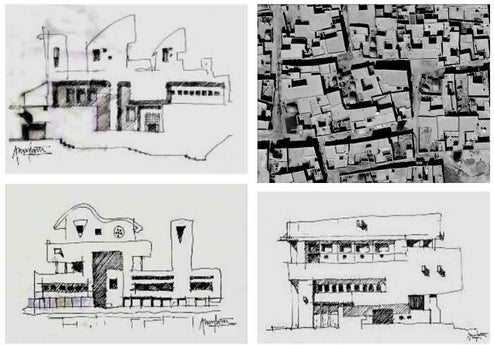TIMELESSNESS AND THE PROCESS OF TRANSFORMATION

The building, if made with an understanding of the era will reflect the era; it will express the time and age in which it is built – it’s immediate order. However, if a building does only that, in terms of expression at least, it becomes a mere product of the era, perishable in its own age and time; it becomes an end in itself and soon becomes “dated”. Many early modern buildings that attempted to strictly represent the machine aesthetic and other principles of modern architecture or the International Style fall in this category of dated buildings. On the other hand, if the building, besides bearing an expression of its era, is able to recall images of a primordial order by means of its own transformation as a building type, it gains temporal dimension into the past while the process of transformation itself is given expression as an order of typological constants and variables.
Similarly, if the building’s expression of its own age is such that it can constitute an image that has the potential to transcend its own era into future buildings, or at least lends itself to such a presupposition, i.e. if it could be further transformed and its image recalled by future building types, it gains temporal dimension into the future. Le Corbusier’s church at Ronchamp and Louis Kahn’s Salk Institute at La Jolla are strong examples of such imagery. The Salk Institute relates earth sky and ocean in one view, recalling primordial images of a valley flanked by hills that looks out into a vast horizon. The Sydney Opera House too provides a strong example. While expressing a romantic association with sailboats at sea, it also recalls primordial images of cave (vaults) and plateau (podium) pertinent to its setting between land and sea. In brief, this is the order of "timelessness".
To build “timeless” means to infuse a building with the capacity to express the transformation that has occurred, and that which can possibly occur. This kind of architecture is comprehensive in its articulation of the human memory in a tectonic expression. Images retained in the memory and their careful, meaningful articulation in built form makes architecture psychologically accessible and thereby “human”, because the human psyche is the most fundamental, innate and unchanging condition that is timeless.
Ayub H. Patel
Create Your Own Website With Webador